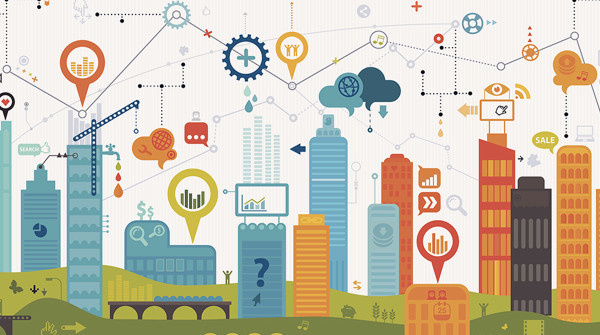
Smarter data for smart cities
Written by: Sunil Jose. The author is MD, Teradata India. For Financial Express
The Internet of Things opens new doors for governments to offer better, ‘smarter’ services to the citizens
The difference between any city and a smart city is the technology deployment undertaken to improve the quality of life, i.e. improved delivery of public services, conservation of resources and better citizen-government interaction that enables daily living easier through the use of connected technology (Internet of Things) and the data it generates.
This, in essence, means that the Big Data churned out by IoT is probed by analytics that provides insights to act upon for improving delivery of utilities and services to citizens at large. Studies show that the volume of data in enterprises alone will grow 50 times year-on-year until 2020. Existing technology is inadequate to address this explosion; besides, over 85% of the data is emerging from new sources such as IoT, social and digital media.
What makes a city smart?
Around 20 cities have been chosen under the ‘Smart Cities’ initiative. Later, another 78 will be added. Some cities in India already use advanced technology within departments to solve issues with water supply, garbage dumping and energy management in buildings, but to a limited extent. Given the state of infrastructure in the country and problems associated with bandwidth, connectivity, power supply, pollution, overcrowding and poverty, Indian cities have a long way to go before they become smart. But the chance to do so is at hand.
Analytics, delivery services
Billions of rupees are spent each year by central and state governments on technology and services, yet many citizens still cannot access or receive the public services and information they need. This is inexcusable. The good news is that while some government agencies acknowledge their challenges and seek solutions, a number of agencies are moving forward, fighting through the massive web of politics to improve the delivery of information and services to citizens.
Improvement of public services depends on utilisation of data, its processing and analyses. This can be analysed by water departments, electricity boards, public transportation systems and other utilities swiftly, and relayed on through feedback information systems to ensure optimum services. Insights culled by analytics from data thrown up by embedded or mobile devices come with minimal human intervention and are that much ‘cleaner’. Such uncorrupted data can be the foundation to deliver improved quality services.
Enabling the smart city
Using IoT is about three things—collecting data (through sensors and other embedded devices); consolidating and analysing this (Big) Data; and taking decisions based on this data through analytics as it reveals the patterns which lead to insights that go a long way in improving service delivery.
Take the example of the Brazilian Federal District Water Utility which brought detailed business visibility and deeper data-driven intelligence to its measurement system, thereby increasing the number of effective connections, while also reducing incidents of fraud. The Utility needed to improve meter management at the individual level. It had a database of information from all customers, including water consumption, bill control, real state records, revenues and demand on the water meter system, and using this they built the profile portfolio of customers and their detailed usage. Each water meter had an average lifetime of five years; if the device was defective or tampered with, the measured consumption read inaccurately low, a result of fraud. ‘Ghost’ bills were studied and suspected fraud was stymied with action to save money. All these data-driven changes hiked business income, leading to 6% revenue growth for the year. Thus, the Utility earned the money for more investments in new meters, resources and equipment, not something easily possible without data analytics.
Similarly, power utilities can improve their financial performance and streamline maintenance costs, extending from where power is generated right up to the meter at a customer’s home or office. Using data spawned by IoT devices, utilities can programme grid efficiency, enhance quality of power, decide on load reduction or directing power better where it’s needed. This, by using real-time, real-world data and analytics.
IoT and monitoring devices can also be used by the police to provide better public security. Real-time processing of data from surveillance cameras, especially in vulnerable areas, can discourage crime and traffic violations.
Complete, validated data
A major issue plaguing Big Data analytics is the lack of complete, validated data. The central premise of a smart city is ‘connectivity’, enabling real-time interaction between various infrastructure departments of the city and with citizens. To provide good facilities, numerous connected sources of information need to be under a shared platform and data from such sources treated concurrently to solve any issues as they arise. Technologically, this is perplexing, as Big Data analytics and applications are not developed enough for real-time dispensation of large data sets. So, instead of targeting many sources, stress must be on sources of material vital to public life. Simply put, select data that is critical for proper functioning.
Technology infrastructure in smart cities is all about Big Data analytics, IoT, and the connecting layer between the physical and digital spheres. It’s time to provide smarter data for smart cities.
Photo: Getty,
The article first appeared in Financial Express magazine




